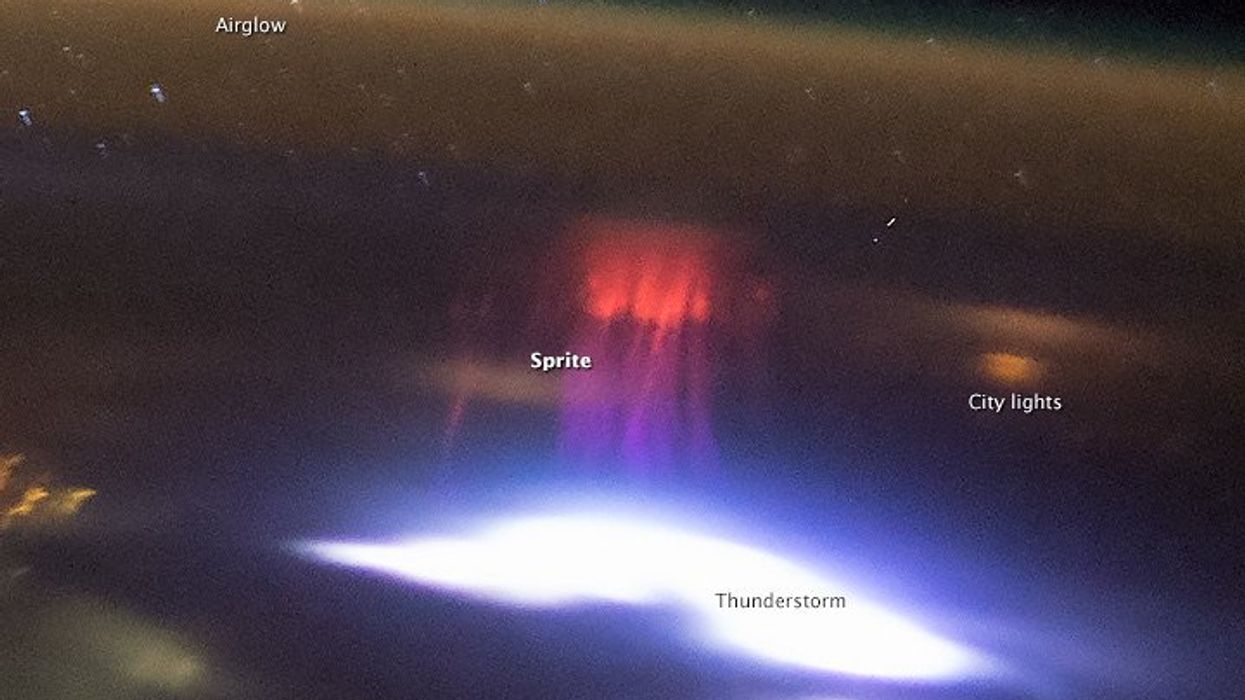Catherine Shuttleworth
Dec 06, 2023

Astronaut captures eerie 'red jellyfish sprite' high above the Earth
European Space Agency (ESA) astronaut Andreas Mogensen has captured a new image of a rare electrical discharge rarely seen from Earth, known as a red sprite.
As part of the Thor-Davis experiment, every Saturday Mogensen heads to the International Space Station's (ISS) Cupola observatory module to attempt to photography storms from above.
The first image released by the experiment a Transient Luminous Event (TLE) is seen between 40 and 80 kilometres (25-50 miles) above Earth.
TLEs, sometimes called "sprites", "red sprites", or "red jellyfish sprites", have been reported by pilots for decades, but were only recorded for the first time in July 1989. These "sprites" are rarely seen from the surface, and are often described as giving the illusion of an alien invasion.
Like regular lightning strikes, the sprites occur following a build-up of electrical charge within clouds. With red sprites, however, the discharge occurs up to 80 kilometers (50 miles) above the Earth. The red colour occurs as the charge meets nitrogen in the Earth's atmosphere.
Mogensen captured the sprite with an "event camera." An advantage of these cameras is they can produce around 100,000 images a second, while drawing very little power to do so.
The study aims to look at intense thunderstorms from a better vantage point as well as weather phenomena in high altitude. It also aims to better understand how lightning in the upper atmosphere affects the concentration of greenhouse gases.
“These images taken by Andreas are fantastic," Olivier Chanrion, lead scientist for this experiment, told ESA of this first image from it. "The Davis camera works well and gives us the high temporal resolution necessary to capture the quick processes in the lightning."
Sign upto our free Indy100 weekly newsletter
Have your say in our news democracy. Click the upvote icon at the top of the page to help raise this article through the indy100 rankings.
How to join the indy100's free WhatsApp channel
Top 100
The Conversation (0)













